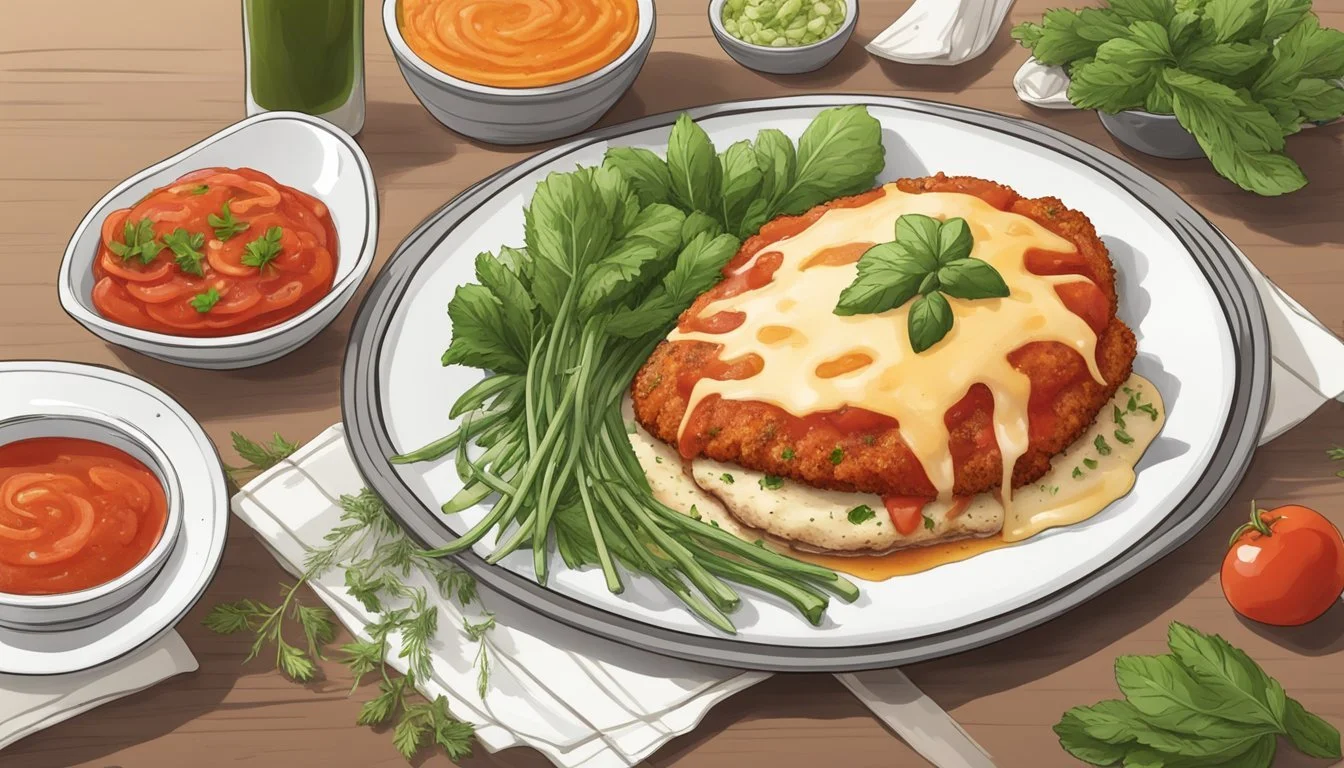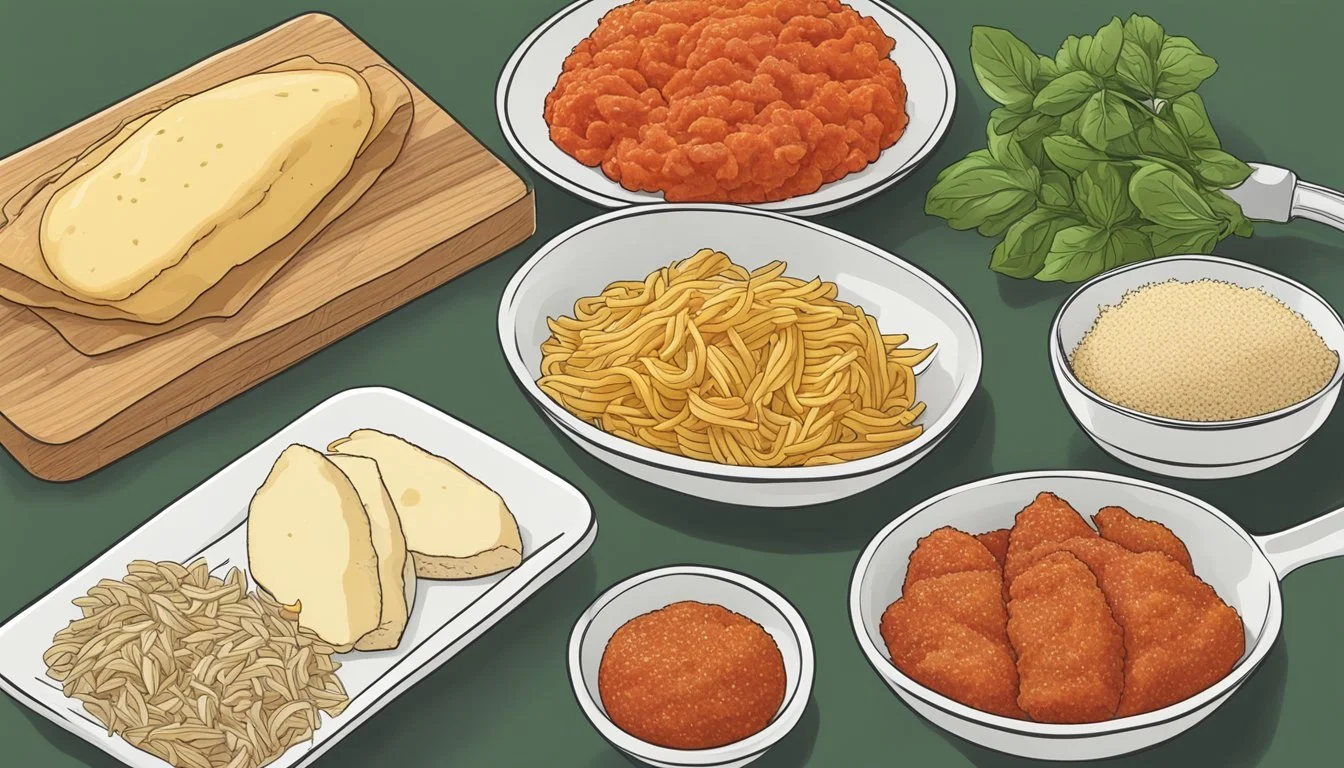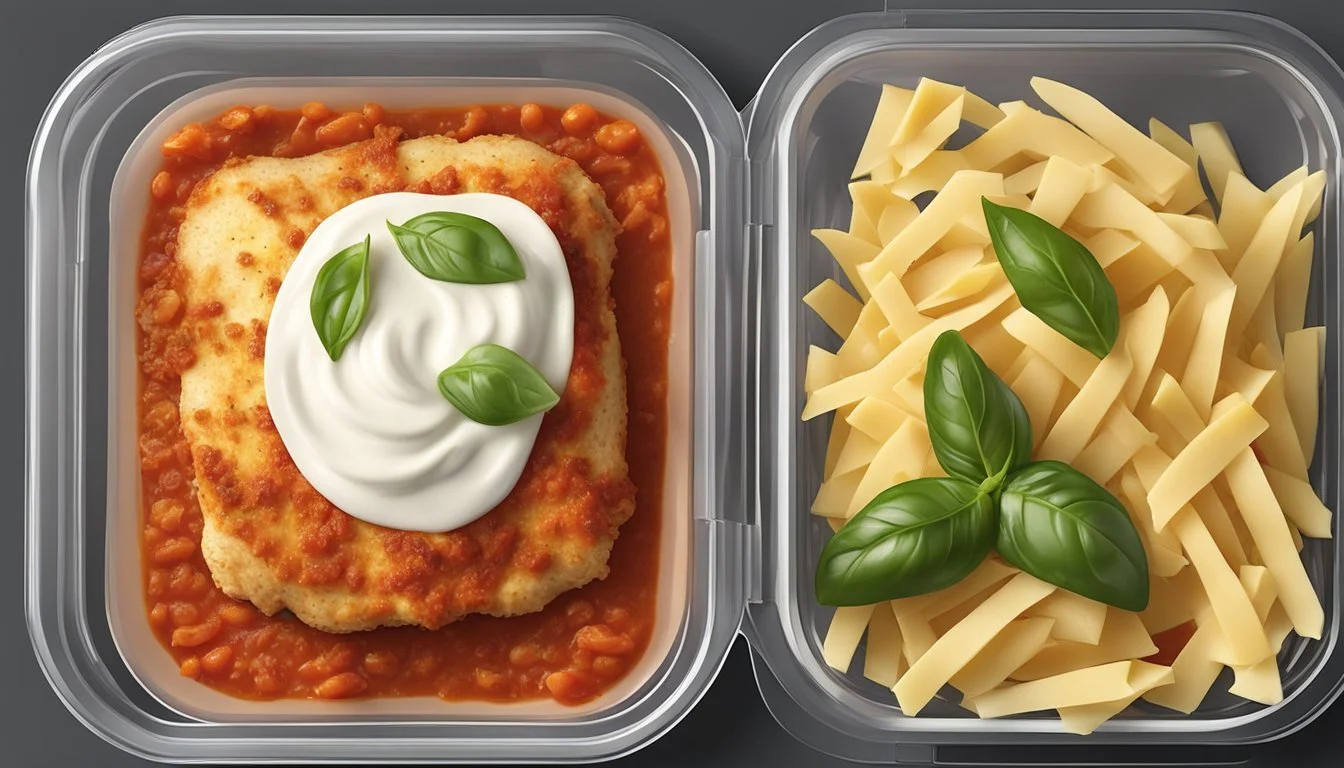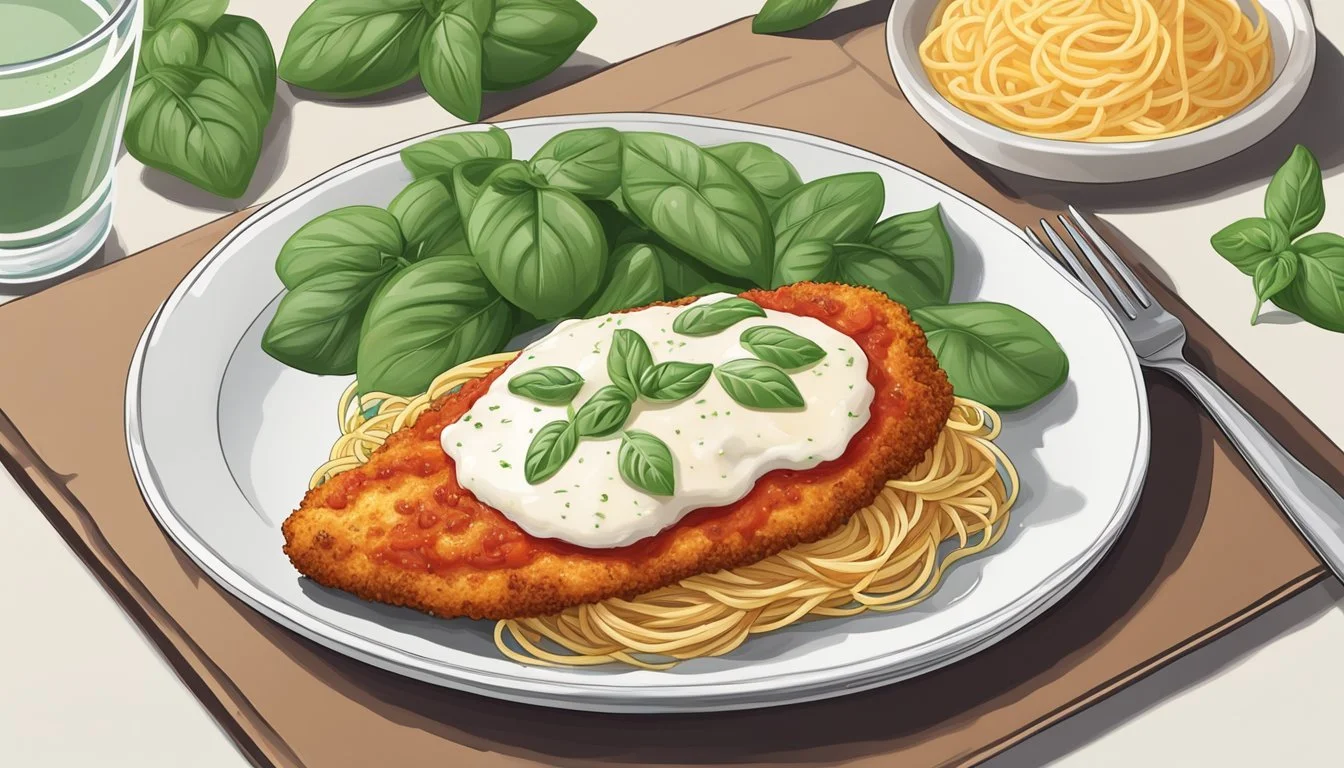How Long Does Gluten-Free Chicken Parmesan Last?
Storage Tips and Shelf Life Explained
Gluten-Free Chicken Parmesan is a delightful twist on a classic recipe, perfect for those adhering to a gluten-free diet. For anyone wondering about its shelf life, Gluten-Free Chicken Parmesan typically lasts for 3 to 4 days in the refrigerator when stored in an airtight container. This provides ample time to enjoy leftovers or plan meals in advance.
Made with tender chicken breasts coated in gluten-free breadcrumbs and Parmesan cheese, this dish is as delicious as it is versatile. Ensuring proper storage is key to maintaining its freshness and flavor. If you need to keep it longer, freezing is a great option.
Whether made from a beloved family recipe or a new discovery, Gluten-Free Chicken Parmesan can be a convenient and savory choice. Proper storage ensures it remains a delicious meal you can enjoy over several days.
Understanding Gluten-Free Chicken Parmesan
Gluten-free chicken parmesan combines the delightful flavors of traditional chicken parmesan with gluten-free ingredients. This section explores what makes this dish gluten-free and outlines its core components.
Defining Gluten-Free
Gluten-free means avoiding proteins found in wheat, barley, and rye. For chicken parmesan to be gluten-free, ingredients such as gluten-free flour, gluten-free breadcrumbs, or gluten-free panko replace their traditional counterparts.
Gluten-free breadcrumbs offer a similar texture to regular breadcrumbs without gluten. Using gluten-free flour provides the necessary coating for chicken breast. The absence of gluten ensures that the dish is suitable for individuals with celiac disease or gluten sensitivity.
The Basics of Chicken Parmesan
Chicken parmesan consists of breaded and baked or fried chicken breast topped with marinara sauce and cheese. First, chicken breasts are coated with an egg mixture and then dredged in gluten-free breadcrumbs seasoned with Italian seasoning, garlic powder, and Parmesan cheese. Olive oil is often used for frying or baking the chicken.
After cooking, the chicken is topped with marinara sauce and mozzarella cheese. The dish is finished in the oven until the cheese melts. Fresh basil may be added for garnish, enhancing the flavor profile. Using high-quality ingredients ensures a delicious and gluten-free meal.
Ingredients and Substitutions
For those preparing gluten-free chicken parmesan, understanding the key ingredients and potential substitutions is essential. This section explores both the core elements and suitable gluten-free alternatives.
Key Ingredients
The primary component of this dish is chicken. Boneless, skinless chicken breasts are typically used, and they should be pounded to an even thickness.
Parmesan and mozzarella are the prominent cheeses utilized. Parmesan adds a sharp, nutty flavor, while mozzarella provides a gooey, melty texture.
Garlic powder, Italian seasoning, pepper, and salt are essential for flavorful breading. Olive oil is critical for greasing the pan and enhancing the dish's taste.
Eggs are used for dredging and helping the breadcrumbs adhere to the chicken. Gluten-free flour and gluten-free breadcrumbs are substituted for their non-gluten counterparts to cater to dietary needs.
Gluten-Free Alternatives
Traditional flour can be replaced by gluten-free flour. Options include rice flour or all-purpose gluten-free blends. Almond flour can also be used for a nuttier taste.
Gluten-free breadcrumbs or gluten-free panko are essential for breading the chicken. These can be found in most grocery stores or made at home by processing gluten-free bread.
For seasoning, ensure all spices, like Italian seasoning and garlic powder, are certified gluten-free to avoid cross-contamination.
Olive oil remains a suitable choice, adding both flavor and a healthy fat source. Use fresh ingredients like basil to enhance the dish’s freshness and flavor. Opting for high-quality gluten-free products ensures the best taste and texture in the chicken parmesan.
Preparation of Gluten-Free Chicken Parmesan
To make Gluten-Free Chicken Parmesan, a meticulous approach to preparation is essential. Begin with well-selected ingredients, focusing on optimal methods for breading and cooking to achieve a delicious and safe meal for those avoiding gluten.
Understanding Prep Time
Preparation for Gluten-Free Chicken Parmesan typically takes about 15-20 minutes. This includes the time needed for seasoning the chicken, preparing the breading station, and heating the oven or skillet. Keep in mind that thorough preparation, such as pounding the chicken breasts thin and ensuring an even coating of breadcrumbs, can speed up the cooking process and result in more consistent cooking.
Breading and Seasoning
Start with pounded thin chicken breasts to allow for faster and more even cooking. Prepare three shallow dishes: one with gluten-free flour, a second with beaten eggs, and a third with a mixture of gluten-free breadcrumbs, Parmesan cheese, garlic powder, onion powder, and Italian seasoning. Dip each chicken piece first in flour, then the eggs, and finally in the breadcrumb mixture. Ensuring an even coating at each stage is crucial for achieving a crisp and delicious crust.
Cooking Techniques
Both baking and skillet frying are effective methods for cooking Gluten-Free Chicken Parmesan. For baking, preheat the oven to 425°F and prepare a baking dish with olive oil. Place the breaded chicken in the dish and bake for 20-25 minutes, or until the chicken reaches an internal temperature of 165°F. If using a skillet, heat oil over medium heat and cook each side for about 5 minutes until golden brown. Air fryers can also be used, set to 400°F for about 12-15 minutes, flipping halfway through.
These methods ensure a delicious and gluten-free variation of the classic chicken parmesan.
Serving Suggestions
Creating an appealing and flavorful plate starts with choosing the right accompaniments and garnishing effectively. The following tips will help you enhance your gluten-free chicken parmesan dining experience.
Accompaniments
Pasta: Pairing gluten-free chicken parmesan with gluten-free pasta such as spaghetti or penne makes for a classic and satisfying meal. Cook the pasta al dente and toss it with a generous amount of marinara sauce before serving.
Salad: A light, crisp salad complements the richness of the chicken parmesan. Options include a simple Caesar salad, mixed greens with balsamic vinaigrette, or an Italian salad with olives, tomatoes, and red onions.
Rice: For an alternative to pasta, consider serving the chicken parmesan with herbed rice or a light risotto. Lemon rice or a garlic butter rice works well to balance the flavors of the dish.
Veggies: Steamed or roasted vegetables are an excellent addition. Choose options like asparagus, broccoli, or bell peppers. Drizzle them with olive oil and season lightly with salt and pepper.
Garnishing Tips
Parsley: Adding chopped fresh parsley on top of the chicken gives a burst of color and a hint of fresh flavor. It’s best sprinkled right before serving.
Fresh Basil: Fresh basil leaves, either whole or chiffonade, offer an aromatic, slightly sweet garnish.
Shredded Cheese: An additional sprinkle of shredded Parmesan or mozzarella adds an extra layer of texture and flavor. Ensure it is melted slightly if applied before serving.
Lemon Zest: A touch of lemon zest can enhance the overall flavor profile, adding a subtle citrus note that brightens the dish.
Sauce Drizzle: For a vibrant presentation, drizzle a bit of extra marinara sauce over the top of the chicken and sides.
By carefully selecting sides and applying thoughtful garnishes, gluten-free chicken parmesan can become a visually appealing and delightful meal for any dinner setting.
Storing and Reheating
Properly storing gluten-free chicken Parmesan ensures it remains fresh and delicious. Reheating it correctly will restore its original flavors and textures.
Proper Storage Methods
To store leftovers, start by allowing the chicken Parmesan to cool to room temperature. Once cooled, transfer it to an airtight container. Store it in the refrigerator for up to four days.
For longer storage, use the freezer. Wrap portions in plastic wrap or aluminum foil, then place them in a freezer-safe container. This method keeps it fresh for up to three months.
When ready to eat, thaw frozen chicken Parmesan in the refrigerator overnight. Avoid leaving it at room temperature as this could cause bacterial growth.
Reheating for Best Taste
Reheat chicken Parmesan gently to retain moisture and flavor. Preheat the oven to 350°F (175°C). Place the chicken on a baking sheet or oven-safe dish.
Bake for 15-20 minutes until the internal temperature reaches 165°F (74°C) and the cheese is melted.
For quicker reheating, use a microwave. Place a portion on a microwave-safe plate, cover with a microwave-safe lid, and heat on medium power at 30-second intervals, checking frequently.
Using a skillet is another option. Preheat the skillet on medium heat, place the chicken in, and cover it. Heat for 5-7 minutes, flipping halfway.
Avoid high heat to prevent drying out the chicken.
Nutritional Information
When considering the nutritional aspects of gluten-free chicken parmesan, it is important to understand the calorie content and the balance of macro and micronutrients such as protein, fat, carbohydrates, and essential vitamins and minerals.
Caloric Breakdown
A serving of gluten-free chicken parmesan typically provides a balanced calorie intake derived from several primary ingredients. On average, a portion contains around 350-450 calories.
This range encompasses the calories from chicken breast, gluten-free bread crumbs, and cheese. Generally, the chicken contributes about 150-200 calories, while cheese and bread crumbs add an additional 200-250 calories combined. Cooking methods, such as baking versus frying, can affect the calorie count.
Macro and Micronutrients
Gluten-free chicken parmesan is rich in both macronutrients and essential micronutrients.
Proteins: This dish is particularly high in proteins, providing approximately 25-30 grams per serving, primarily from the chicken breast and cheese.
Fats: It contains total fats around 15-20 grams, of which saturated fats make up roughly 6-8 grams.
Carbohydrates: The dish offers around 30-40 grams of carbohydrates, largely from the gluten-free bread crumbs. It also provides 2-4 grams of dietary fiber and typically 4-6 grams of sugars.
Sodium and Cholesterol: Sodium levels can reach up to 700-900 mg per serving, influenced by cheese and seasoning. Cholesterol content is usually 80-100 mg, largely from chicken and eggs used in breading.
In addition to macros, this dish provides significant vitamins and minerals, including calcium from cheese and iron from chicken.
Tips for Perfect Gluten-Free Chicken Parmesan
For a perfect gluten-free chicken parmesan, select quality ingredients and follow specific cooking recommendations.
Selecting Quality Ingredients
Starting with fresh, high-quality chicken breasts ensures a tender and flavorful result. Opt for organic or free-range chicken when possible.
Using fresh mozzarella cheese and Parmesan cheese will enhance the dish's taste. Grate the Parmesan yourself for the best consistency.
Choose gluten-free breadcrumbs that crisp well upon baking. Combine them with spices like garlic powder, Italian seasoning, salt, and pepper for added flavor.
For the marinara sauce, homemade or high-quality store-bought varieties make a difference. Avoid those with added sugars or preservatives.
Cooking Recommendations
Flatten the chicken breasts to even thickness for uniform cooking. Preheat the oven to the recommended temperature, usually around 425°F to 450°F.
Prepare a breadcrumb mixture with gluten-free breadcrumbs and spices. Coat the chicken evenly to ensure a crispy exterior. Use a skillet for browning if desired, but baking is a healthier, fuss-free option.
Bake until the internal temperature reaches 165°F. A meat thermometer ensures accuracy. Top with marinara sauce, mozzarella cheese, and grated Parmesan.
Bake until the cheese is melted and bubbly, ensuring a delicious, thoroughly cooked chicken parmesan.
Health Considerations
When enjoying gluten-free chicken Parmesan, it's essential to account for potential allergens and dietary needs. This ensures a healthy and safe meal for all individuals.
Allergen Information
Gluten-free chicken Parmesan eliminates gluten, making it suitable for those with celiac disease or gluten intolerance. Wheat is replaced with alternatives like almond flour or sprouted brown rice flour. However, it's crucial to check all ingredients for traces of gluten due to cross-contamination risks.
Eggs are commonly used in the preparation process, which can be problematic for those with egg allergies. Alternatives like flaxseed meal combined with water can be used as a substitute to make the recipe egg-free. Additionally, dairy is present in Parmesan cheese, posing a concern for those with lactose intolerance or dairy allergies.
Dietary Adjustments
Gluten-free chicken Parmesan can fit into various dietary plans. For a low-carb or keto diet, using almond flour instead of traditional flour reduces carbohydrate intake. This makes the dish higher in protein and healthy fats.
To accommodate a dairy-free diet, nutritional yeast can be used in place of Parmesan cheese. This option still provides a cheesy flavor without any dairy content.
Vegetarians can enjoy a similar dish by substituting chicken with eggplant or portobello mushrooms, maintaining the same seasoning and cooking methods. These adjustments allow the meal to meet diverse dietary requirements while retaining its delicious flavor and texture.










